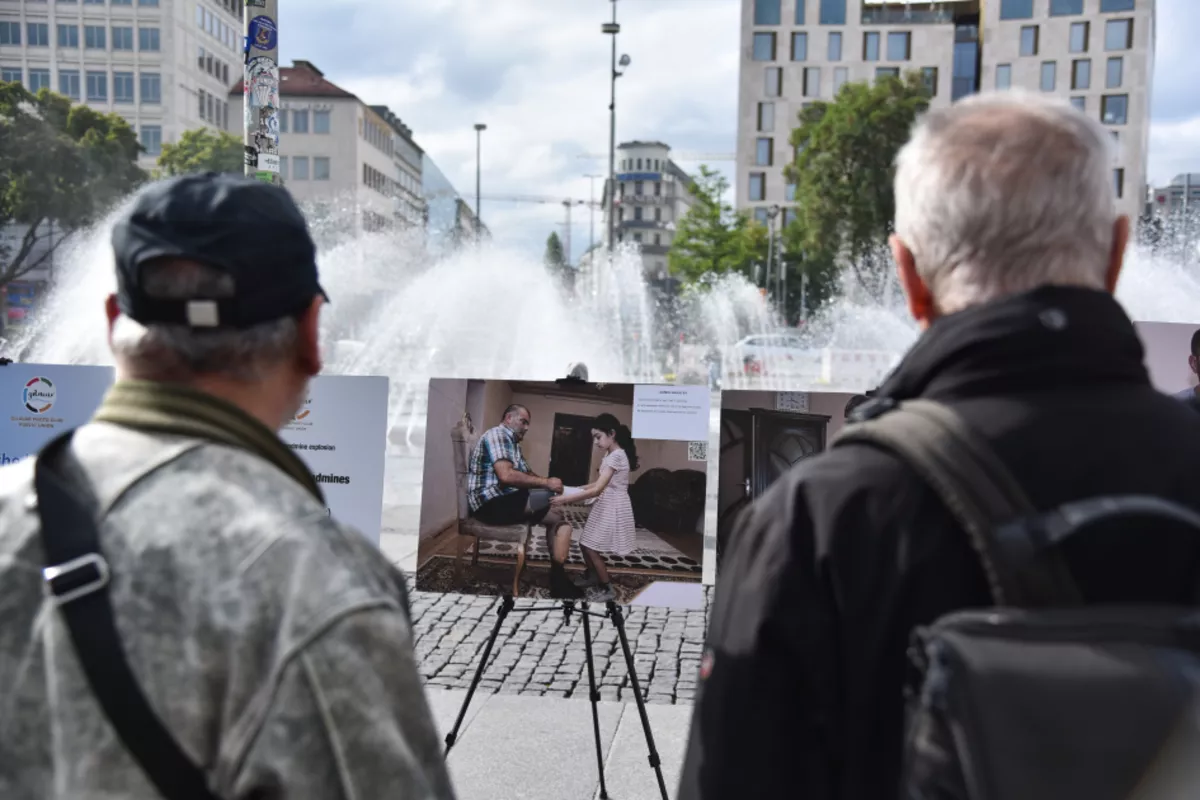
photo: AZERTAC
An open-air photo exhibition dedicated to Azerbaijani citizens affected by landmine explosions was held in Munich’s central Karlsplatz square.
The event aimed to raise international awareness about the devastating humanitarian impact of landmines in Azerbaijan, The Caspian Post reports via local media.
Organized as part of the “Culmination Point of Danger” project, the exhibition was implemented by the “Gilavar” Photo Club Public Union with support from the Agency for State Support to NGOs of the Republic of Azerbaijan. The project’s German partner was the Munich Azerbaijanis Cultural Center.
The exhibition featured more than 20 powerful photographs that documented the lives, struggles, and resilience of landmine survivors. Blending personal stories with stark statistics, each image portrayed not just individual tragedies but the broader national pain endured by Azerbaijan. Visitors were invited to scan QR codes beside the photos to access more detailed information about the victims and the ongoing crisis.
Deeply moving personal testimonies accompanied the visual display, including quotes such as:
“I lost my leg, but not my hope!”
“I was a doctor saving people from mines - until I became a victim myself.”
“The mine I played with as a toy at 11 stole my childhood.”
“I stepped on an anti-tank mine... I understand the pain of a young man who lost both legs.”
A message board allowed attendees to share heartfelt notes addressed to the victims, fostering a sense of solidarity and empathy.
Speaking at the event, Rashad Mehdiyev, Chairman of the “Gilavar” Photo Club, shared his harrowing personal experience. In 2021, while traveling toward Susuzlug village in the Kalbajar district, he survived an anti-tank mine explosion - a device planted by Armenian forces. The blast tragically claimed the lives of three others on official duty: TV cameraman Siraj Abishov, journalist Maharram Ibrahimov, and local official Arif Aliyev. Four others sustained serious injuries.
The exhibition also highlighted the broader impact of Armenia’s continued mine-laying practices. Since the end of the Second Karabakh War, more than 3,400 Azerbaijanis have become victims of mines and unexploded ordnance. Between 2020 and 2025 alone, 409 people have been injured and 71 killed in such incidents. Although Armenia has been pressured to hand over minefield maps, only about 25% have proven reliable. The Gilavar Photo Club used the occasion to call for the immediate and full disclosure of accurate mine maps by Armenia.
The event emphasized the global nature of the landmine crisis and Azerbaijan’s proactive stance on the issue. The country has officially recognized humanitarian demining as its 18th National Sustainable Development Goal (SDG) and is actively advocating for this to be adopted as the 18th UN SDG.
The exhibition in Munich marked a milestone as the first event of its kind organized by an Azerbaijani NGO in Germany. Building on this success, the Gilavar Photo Club plans to bring the exhibition to other major European cities, aiming to galvanize international support and action against the deadly legacy of landmines.
Share on social media